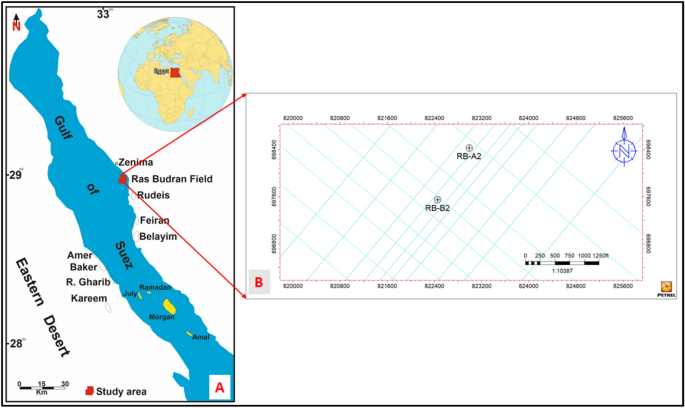The upper cretaceous carbonate sediments of the Ras Budran Field, Gulf of Suez, Egypt: stacking patterns and depositional controls
IF 1.3
4区 地球科学
Q3 GEOLOGY
引用次数: 2
Abstract
Abstract The present study interprets the carbonate stacking patterns and their depositional controls in the Upper Cretaceous strata of the Ras Budran Field in the Gulf of Suez, Egypt, on the basis of integrated well logging and a geological report provided. A set of well logs was run for two wells (RB-A2 and RB-B2), comprising gamma ray, resistivity, density, neutron, sonic, and photoelectric factor. Composite logs and geological reports were also used to help deduce the lithological and biological description of the stratigraphic units under investigation. The stacking patterns of the carbonate rocks yielded three types of electro-facies. The first facies covers the lower part of the Brown Limestone (early Campanian) and reflects a cylindrical (aggrading) stacking pattern. This facies indicates keep-up carbonate deposition in a heterogeneous facies accumulated in shallow water. The second facies covers the upper part of the Brown Limestone (late Campanian) and displays a funnel (prograding) stacking pattern. This facies indicates the depositional setting of a shallow shoreline. The third facies covers the Sudr Chalk (Maastrichtian), for which a serrated stacking pattern indicates an aggradational environment. This pattern indicates a marine depositional setting both distal and deep. Therefore, the formation and evolution of the cyclical stacking pattern of the carbonate rocks reflects variations in accommodation potential that determines the environmental changes. The evolution of these deposits is mainly attributed to a combination of eustatic sea-level fluctuations and tectonic episodes within the basin.

埃及苏伊士湾Ras Budran油田上白垩统碳酸盐岩沉积:堆积模式与沉积控制
摘要在综合测井资料和一份地质报告的基础上,对埃及苏伊斯湾Ras Budran油田上白垩统地层碳酸盐岩堆积模式及其沉积控制作用进行了解释。对两口井(RB-A2和RB-B2)进行了一组测井,包括伽马射线、电阻率、密度、中子、声波和光电因子。复合测井和地质报告也被用来帮助推断所调查地层单元的岩性和生物学描述。碳酸盐岩的叠置模式产生了三种电相类型。第一相覆盖棕灰岩下部(早坎帕尼亚期),呈柱状(堆积)叠置模式。该相是一种沉积于浅水的非均质碳酸盐相。第二相覆盖于棕灰岩上部(晚坎帕期),呈漏斗状(进阶)堆积模式。该相表明沉积环境为浅海岸线。第三相覆盖了苏德尔白垩系(马斯特里赫特),其锯齿状堆积模式表明其沉积环境。这种模式表明了远端和深部的海相沉积环境。因此,碳酸盐岩的周期性堆积模式的形成和演化反映了可容纳电位的变化,这种变化决定了环境的变化。这些矿床的演化主要归因于海平面的上升波动和盆地内构造事件的共同作用。
本文章由计算机程序翻译,如有差异,请以英文原文为准。
求助全文
约1分钟内获得全文
求助全文
来源期刊

Carbonates and Evaporites
地学-地质学
CiteScore
2.80
自引率
14.30%
发文量
70
审稿时长
3 months
期刊介绍:
Established in 1979, the international journal Carbonates and Evaporites provides a forum for the exchange of concepts, research and applications on all aspects of carbonate and evaporite geology. This includes the origin and stratigraphy of carbonate and evaporite rocks and issues unique to these rock types: weathering phenomena, notably karst; engineering and environmental issues; mining and minerals extraction; and caves and permeability.
The journal publishes current information in the form of original peer-reviewed articles, invited papers, and reports from meetings, editorials, and book and software reviews. The target audience includes professional geologists, hydrogeologists, engineers, geochemists, and other researchers, libraries, and educational centers.
 求助内容:
求助内容: 应助结果提醒方式:
应助结果提醒方式:


